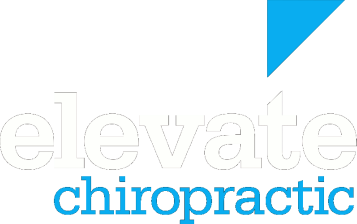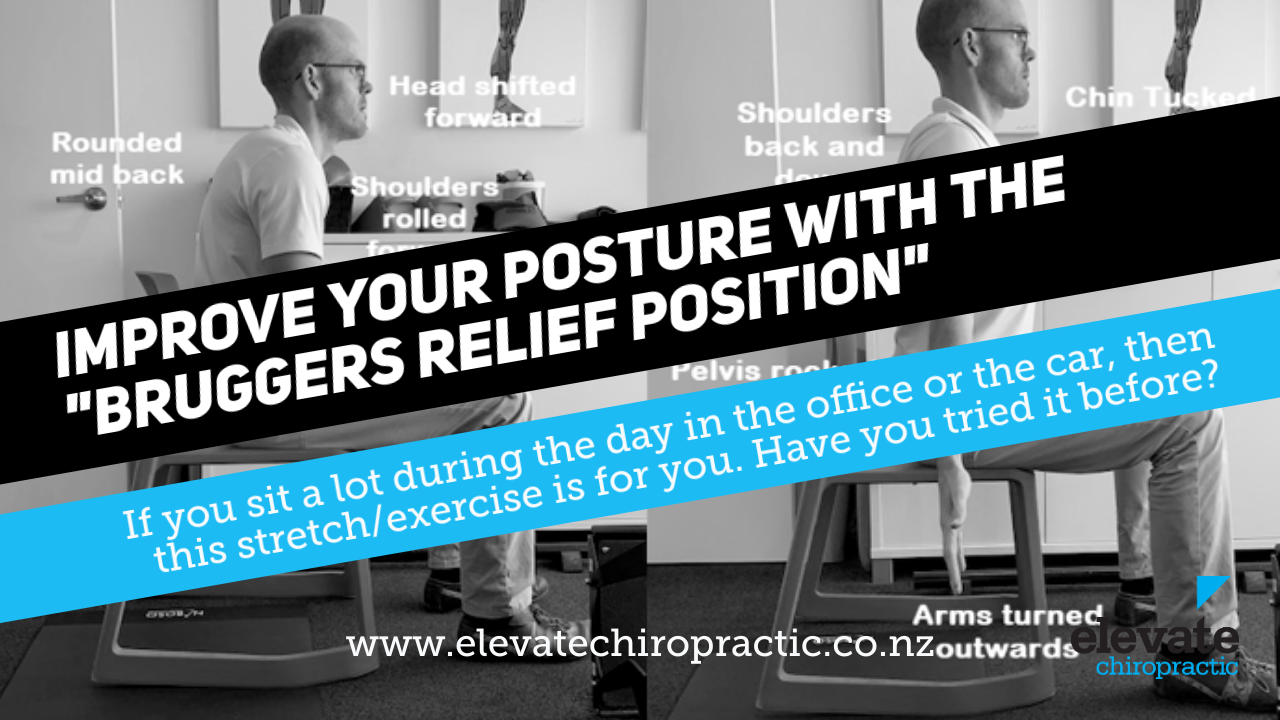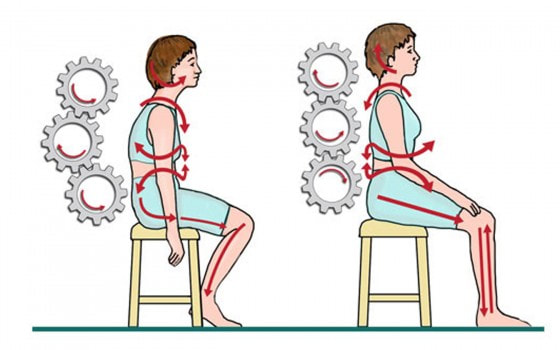This position can lead to tension and tightness in the upper back and neck, headaches and tightness in the chest (plus a lot of other problems). It also commonly called "Upper Cross Syndrome", you may have heard of it.
In this post I wanted to share a simple stretch/exercise you can do to hopefully reduce the negative effects of this "poor sitting posture", it is called the Bruggers Relief Position.
The Bruggers Relief Position was developed by Alois Brugger, a Swiss neurologist. It is a very simple exercise that is best done as a micro break during the day and can help improve your posture, or at least minimize the damage from sitting in front of the computer all day. It is well worth trying.
Have you ever played with a kids toy that has different sized cog wheels, where if you spin one, the others all turn? If you remember this toy, you will also remember that if one cog spins one way, the next cog spins in the opposite direction. This concept can also show how our posture works.
The cog wheel model is a simple way of showing what good and bad posture looks like by showing how different body segments interact. You can see in the picture below what poor or slumped posture does to the cogs and how they change when moving into a good postural position.
The 3 cogs represent the 3 keys to good sitting posture. Brugger named them the three primary movements:
- Anterior tilt of the pelvis (this is the bottom cog rolling forward)
- Elevation of the chest (as the bottom cog rolls forward, the middle cog elevates the chest)
- Elongation of the neck (as the chest elevates, it elongates the neck)
The "Bruggers relief position" turns this concept into an exercise. Let's learn how to do it.
This exercise is designed to be done as a micro break. Do it every 20-30 minutes and hold for 3-4 deep breathes (approximately 20 seconds).
- Sit at the edge of your chair, with the legs a little wider than the hips and toes pointing outward slightly.
- Move into the good sitting position as shown in the cog wheel model.
- Roll the pelvis forward so you are sitting on the bones of your pelvis.
- Lift up your chest towards the roof.
- Elongate your neck (like there is a string pulling it towards the roof) and tuck the chin in.
- With your arms hanging down beside you, rotate them outward as far as you can. Your thumbs should be pointing outwards.
- Actively pull your shoulder blades together without lifting your shoulders. Thinking of lifting your sternum towards the roof helps with this. We don't wont to create more dysfunction by lifting the shoulders up.
- Take 3-4 deep breaths (it should last approximately 20 seconds).
- Relax again
I encourage you to try this stretch and do it consistently for several days and see how you feel. I know your body will thank you for it.
If you would like a full posture and chiropractic assessment, call the clinic to arrange a time.





 RSS Feed
RSS Feed


